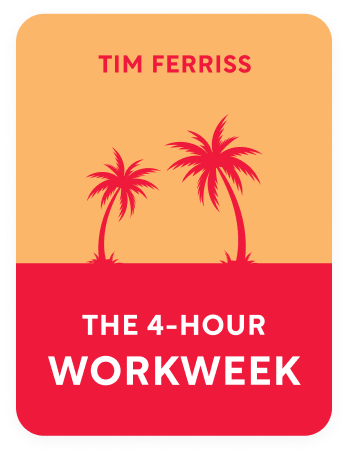

This article is an excerpt from the Shortform book guide to "The 4-Hour Workweek" by Tim Ferriss. Shortform has the world's best summaries and analyses of books you should be reading.
Like this article? Sign up for a free trial here .
What is the five step method to convincing your boss to let you work remotely? How do you use the five step method?
In order to work remotely, chances are you’ll have to convince your boss first. The five step method explains one way you can accomplish this.
Learn more about the five step method for convincing your boss to let you work from home.
The Five Step Method for Working Remotely
There is a five step method to convincing your boss to let you work remotely.
1. Make yourself more valuable. You can do this by asking your company to pay to train you, so that if you quit, they lose that investment.
- Shortform Example: Chidi is a blog writer. He asks his boss to send him to a blogging conference.
2. Prove that you’re more productive outside the office. Call in sick for two days and work from home. (Choose Tuesday and Wednesday so it doesn’t look like you’re pretending to be ill to get a long weekend.) Be twice as productive as you are in the office and keep a record of what you get done. Additionally, use this time to solve any potential remote work logistical problems such as technical issues.
- Shortform Example: Chidi calls in sick on a Tuesday and works from home. In the office, he normally writes four blog articles a day. At home, he writes eight. He starts out working at his kitchen table but it’s too loud so he finds a quieter space in his house.
3. Spin remote work to be a benefit for your company. Note what and how much you got done while you were remote and why.
- Shortform Example: Chidi will tell his boss that he was able to write twice as many articles from home because he wasn’t constantly being interrupted like he is in the office.
4. Ask for a trial period of one day per week for two weeks. Plan what you’re going to say, but ensure you don’t come off as too formal, or your boss might worry that you want a permanent change. Tell your boss how much more productive you were when you were “sick,” answer any of their questions about logistics, and ask for two remote days a week so if they say no you can counter with one. Start with this small ask because asking to go fully remote is such a big change your boss might refuse. Additionally, a trial also gives you a chance to practice working remotely, so that when you do make the changeover, it’s seamless.
- Shortform Example: Chidi requests to work remotely for two days each week. Chidi’s boss asks him about how he would work on anything that required software on work computers, and Chidi tells him about a remote access program he used on his days away that worked perfectly.
5. Increase your trial period until it becomes the norm. Be exceptionally productive on your remote days. You can even be less productive on your in-house days to make the difference more obvious. Every time you ask for an incremental increase in remote work, stress the benefits to the company of you working remotely. Address any concerns and reassure your boss that the move is reversible. Keep requesting trials until you get to full-time remote. Ideally, this will be at a time when your company is in the middle of something they need you for.
- Shortform Example: After Chidi’s two-day-per-week trial, he asks to move to four remote days a week. Chidi’s boss has some concerns—chiefly, he’s worried that Chidi wants to work remotely because he’s about to quit. Chidi reassures him that this is not the case—since he’s started working remotely, he’s much happier. Reassured, his boss approves the new trial.
If you think this will work, try to five step method to start working remotely.

———End of Preview———
Like what you just read? Read the rest of the world's best book summary and analysis of Tim Ferriss's "The 4-Hour Workweek" at Shortform .
Here's what you'll find in our full The 4-Hour Workweek summary :
- The 4-step process to live a "retired" lifestyle now
- Find out if you're wasting the best years of your life working a 9-5
- How to create a business that makes you money without sucking up your time






